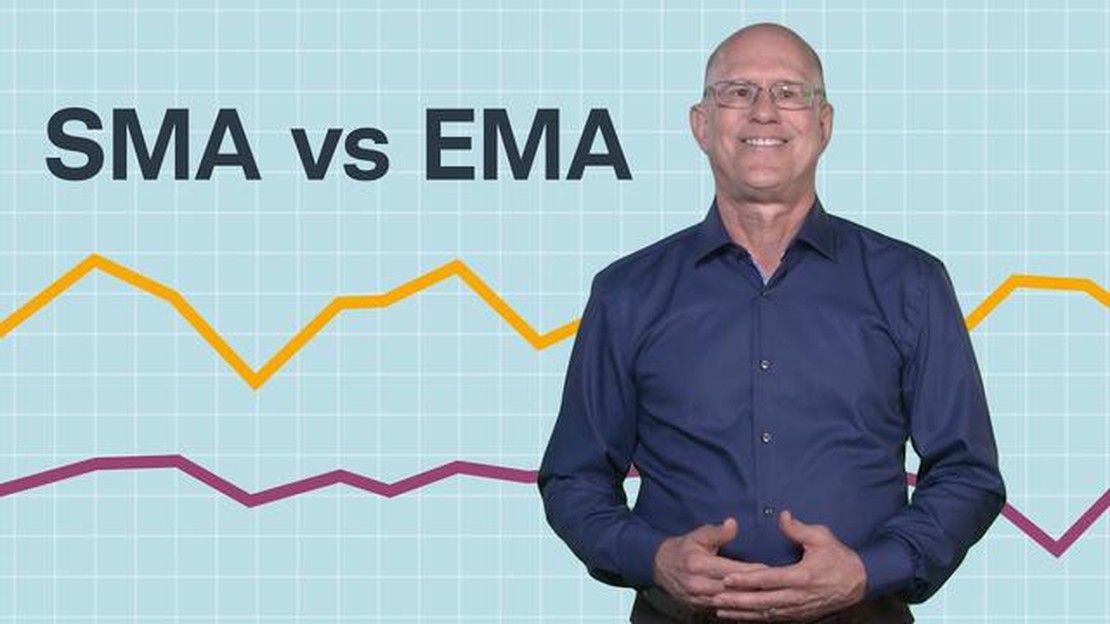Discover the Best Hack Codes for Ultimate Productivity | Website Name
What is the best hack code? Are you tired of wasting time and effort on tasks that could be done more efficiently? Do you want to take your …
Read Article
Simple Moving Average (SMA) and Exponential Smoothing are two commonly used statistical techniques in time series analysis. Both methods are used to forecast future values using historical data, but they differ in terms of their weighting factor and calculation method.
SMA is a basic technique that calculates the average of a given number of past data points. It assigns equal weight to each data point and does not consider the trend or pattern in the data. SMA is simple and easy to calculate, making it suitable for beginner analysts or in cases where simplicity is preferred over accuracy.
On the other hand, Exponential Smoothing is a more advanced technique that assigns weights to past data points based on their recency. Unlike SMA, which treats all data points equally, Exponential Smoothing gives more weight to recent observations and less weight to older ones. This allows the model to adapt to changing trends in the data.
Exponential Smoothing is particularly useful when the data has a changing trend or seasonality. By assigning higher weights to recent observations, it can capture short-term fluctuations and respond quickly to changes in the data. This makes Exponential Smoothing more suitable for forecasting in dynamic environments or when accurate short-term predictions are required.
In conclusion, while both techniques are used for time series forecasting, SMA and Exponential Smoothing have distinct characteristics. SMA is simpler and gives equal weight to all past data points, while Exponential Smoothing assigns more weight to recent observations, making it more adaptive to changing trends. Analysts should consider the nature of the data and the specific forecasting requirements to choose the most appropriate method for their analysis.
When it comes to forecasting and analyzing time series data, two popular methods are Simple Moving Average (SMA) and Exponential Smoothing. Both techniques aim to remove noise and uncover underlying trends or patterns in the data.
Simple Moving Average (SMA):
SMA is a basic method that calculates the average value of a data set over a specified period of time. It smooths out fluctuations and helps identify the overall trend. SMA assigns equal weightage to each data point in the given period, which means that recent and older data points are given the same importance. This makes SMA better suited for long-term trends rather than short-term fluctuations.
Exponential Smoothing:
Exponential Smoothing, on the other hand, assigns exponentially decreasing weights to past observations. It gives more weightage to recent data points and less weightage to older ones. By doing so, it focuses on the most recent information, which makes it more responsive to short-term changes in the data. The choice of the smoothing factor determines the rate of decay for the weights and how much weightage is given to recent data points compared to older ones. This makes Exponential Smoothing suitable for both short-term fluctuations and longer-term trends.
In conclusion, SMA and Exponential Smoothing are both useful techniques for analyzing time series data. SMA is better suited for identifying long-term trends, while Exponential Smoothing is more responsive to short-term changes. Understanding the strengths and limitations of each method can help analysts make informed decisions when forecasting and analyzing time series data.
When it comes to forecasting and analyzing time series data, two commonly used methods are Simple Moving Average (SMA) and Exponential Smoothing. While they both aim to capture and predict trends in the data, there are several key differences between these two techniques:
By understanding these key differences, you can choose the appropriate technique for your specific forecasting needs and better analyze time series data. Both SMA and Exponential Smoothing have their advantages and limitations, and selecting the right method depends on the characteristics of your data and the forecasting horizon you are targeting.
Read Also: Understanding Stock Option Appreciation Rights: A Comprehensive Guide
The Simple Moving Average (SMA) and Exponential Smoothing are popular techniques used in time series forecasting and analysis. Both methods have various applications across different industries and domains.
SMA Applications:
Read Also: Understanding Forex Volume: A Comprehensive Guide to Analyzing Market Trends3. Supply Chain Management: SMA helps in forecasting inventory levels, demand fluctuations, and production scheduling. It assists supply chain managers in optimizing inventory, reducing stockouts, and improving order fulfillment.
Exponential Smoothing Applications:
 2. Financial Analysis: Exponential Smoothing is used in finance to forecast financial indicators like revenue, expenses, and cash flows. It helps in budgeting, financial planning, and determining future financial performance based on historical data.
3. Time Series Analysis: Exponential Smoothing is a fundamental technique for analyzing time series data. It helps in identifying underlying patterns, detecting outliers or anomalies, and making predictions for future observations.
2. Financial Analysis: Exponential Smoothing is used in finance to forecast financial indicators like revenue, expenses, and cash flows. It helps in budgeting, financial planning, and determining future financial performance based on historical data.
3. Time Series Analysis: Exponential Smoothing is a fundamental technique for analyzing time series data. It helps in identifying underlying patterns, detecting outliers or anomalies, and making predictions for future observations.
Both SMA and Exponential Smoothing are useful tools in forecasting and data analysis. The choice of approach depends on the nature of the data, the presence of specific patterns, and the desired level of simplicity or sophistication in the analysis.
SMA (Simple Moving Average) and exponential smoothing are both techniques used in time series analysis to forecast future values. The main difference between them is how they assign weights to the observations. SMA gives equal weight to all observations, while exponential smoothing assigns exponentially decreasing weights, with more weight given to recent observations.
Exponential smoothing is more suitable for forecasting short-term trends as it gives more weight to recent observations. This means that the forecast will be more responsive to recent changes in the data, allowing for better predictions of short-term fluctuations.
Both SMA and exponential smoothing can be used for forecasting long-term trends, but SMA can be more susceptible to extreme observations, which can skew the forecast. Exponential smoothing, on the other hand, assigns less weight to extreme observations, making it more robust for long-term trend forecasting.
Yes, there are limitations to using both SMA and exponential smoothing. SMA is sensitive to extreme values and can produce inaccurate forecasts if outliers are present in the data. Exponential smoothing assumes that the data is stationary, meaning that it does not have any trends or seasonality. If the data violates this assumption, the forecasts may not be accurate.
Exponential smoothing is slightly more computationally intensive than SMA because it requires updating the weights at each time step. However, the difference in computational requirements is usually negligible, especially for small datasets. Both techniques are relatively simple and efficient.
SMA, or Simple Moving Average, calculates the average of a series of data points over a specific time period, while exponential smoothing assigns more weight to recent data points and less weight to older data points.
What is the best hack code? Are you tired of wasting time and effort on tasks that could be done more efficiently? Do you want to take your …
Read ArticleTrading with ROC: A Complete Guide Trading can be an exciting and profitable venture if done correctly. One tool that traders often use is the Rate of …
Read ArticleUnderstanding stocks and bonds: What you need to know Investing can be a daunting task, but it doesn’t have to be. Understanding the basics of …
Read ArticleDoes Nedbank offer international services? If you are wondering whether Nedbank operates internationally, the answer is yes. Nedbank is one of South …
Read ArticleWhat time does European forex market open in India? Forex trading is a global market that operates 24 hours a day, allowing traders to buy and sell …
Read ArticleThe Advantages of a Stock Swap Stock swaps have become an increasingly popular method for business mergers and acquisitions. This exchange of stocks …
Read Article